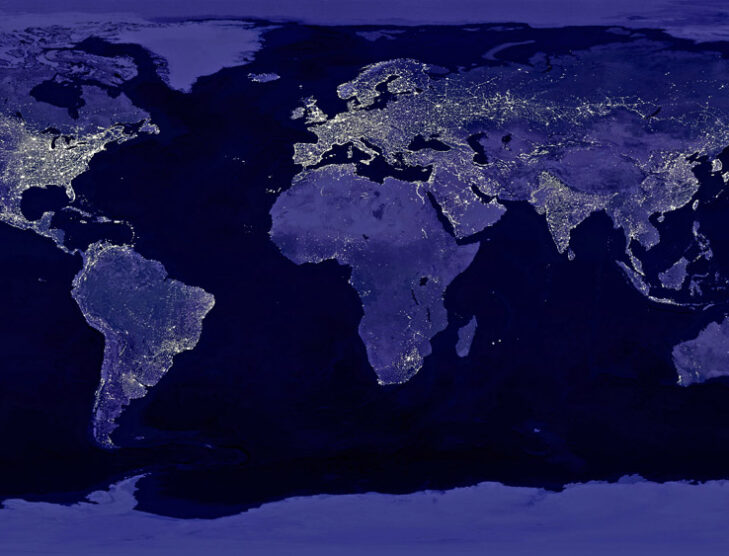
World Energy Outlook 2018: A version of the future
The world energy sector is changing, with growing electrification, renewables expansion, globalisation of natural gas markets, and turbulence in oil production. Though, the future of energy is not yet written. What could it look like in the next couple of decades?
One projection of world energy details rising incomes, a population increase of 1.7 billion, and a 25% increase in global energy demand by 2040. Growth would be led by developing countries in this scenario, with India the main protagonist. Low-carbon technology, renewables and natural gas will account for 80% of growth, while electricity consumption will be double that of overall energy demand.
This is one of several possible versions of the future delivered in the World Energy Outlook 2018, the International Energy Agency’s (IEA) flagship annual publication, released in November 2018. This consequence, dubbed the “New Policy Scenario” (NPS) is not a forecast, says the IEA, rather one potential outcome based on policies and targets announced by governments.
In the NPS, the 2018 World Energy Outlook estimates global oil demand will continue to grow in the coming decades due to rising petrochemicals, trucking and aviation demand. Growth will not peak before 2040, though slowing to 106 million barrels per day (mb/d), 11 mb/d higher than today. However, 300 million electric cars on the road and efficiency improvements in the non-electric car fleet, will deliver a peak in oil use in cars in the mid-2020s. The IEA outlook also notes a shift in the composition of oil product demand towards lighter products — potentially causing a challenge for refiners.
China will assume the mantle of the world’s largest oil consumer in the 2030s, with imports exceeding 13 mb/d in 2040, while the United States rules production growth, accounting for three-quarters of the increase in global oil production to 2025, off the back of the shale revolution.
The IEA has revised 2017 figures for natural gas demand upwards by almost 100 billion cubic meters to 2040 in the latest World Energy Outlook as gas demand grows rapidly in China, alongside robust policy to improve air quality. Natural gas will continue to grow in both advanced and developing economies, with emerging economies in Asia set to deliver half of the total demand growth through to 2040. The outlook also suggests the risk of an abrupt tightening in gas markets in the mid-2020s may be subsiding due to recent liquefied natural gas (LNG) project approvals.
Despite higher coal prices and recent profit increases for mining companies, investment remains subdued. NPS highlights a reduction in coal demand in 2040 following declines in China, and a 30% weakening in U.S. coal production in the same period. India and Southeast Asia will observe demand increases, with India becoming the second largest producer of coal in the coming decade.

In the power markets, renewable technology will be the equipment of choice with two-thirds of global capacity additions to 2040. The NPS predicts electricity generation from renewables will almost triple by 2040. The outlook advises that the “direct use of renewables also grows in transport and heat applications, but their share remains more limited.”
Biofuels will account for 6% of renewables use in transport by 2040, an increase of 4.7 million barrels of oil equivalent per day (mboe/d), though the outlook highlights ongoing concerns around the sustainability of biofuels in countries where agricultural land usage for feedstocks could compete with food production, or impact CO2 emissions through further land clearing and cultivation. A focus on advanced biofuels may help alleviate some of these concerns.
Solar PV has quickly moved from a niche to mainstream technology for electricity generation. China and India are driving growth, with more than 50% of global solar PV capacity additions. The technology, in this scenario, becomes the second largest installed capacity before 2040.
Efficiency measures in NPS also assist in curbing global energy consumption. The World Energy Outlook advises that energy consumption would be almost 30% higher than projected without these augmentations.
While these changes sound positive, the reality is, our efforts are not good enough. NPS will not deliver a peak and reversal in CO2 emissions — they will rise gradually to 2040 and fail to achieve the outcomes in the 2015 Paris Agreement. While efficiency improvements in regions such as the European Union, Japan and Korea will reduce energy demand, increasing emissions in developing countries will more than offset these improvements.
However, NPS is only one possible future for our energy system. It could happen, but the pathway is not preordained. The IEA’s scenario-based analysis provide several different futures available to us.
Unfortunately, in the “Current Policy Scenario” (CPS) the outlook is even bleaker. CPS assumes no change in policies from today and “leads to increasing strains on almost all aspects of energy security.” The research confirms the importance of government decisions in determining the energy path we follow.

“If the world is serious about meeting its climate targets then, as of today, there needs to be a systematic preference for investment in sustainable energy technologies. To be successful, this will need an unprecedented global political and economic effort,” said Fatih Birol, IEA executive director.
The IEA report also promotes a “Sustainable Development Scenario” (SDS) — an accelerated programme of policy interventions to address climate change and clean energy transitions. SDS “ups the ante” on climate change efforts — restricting the global temperature rise to “well-below” 2°C above pre-industrial levels and produces a steep decline in emissions prior to 2040.
Undeniably, the gap to achieving this scenario is “huge.” The SDS requires (perhaps unfeasible) policy interventions to deliver a peak in global oil demand around 2020 at 97 mb/d. This scenario requires demand to peak in almost all countries before 2030.
So how do we achieve this?
This scenario needs 930 million electric cars on the road by 2040 (50% of the global car fleet). We currently have four million. Cars that are not electric, gasoline and diesel, will need to be 40% more efficient than today. One-quarter of buses must be electric, and 20% of trucks will be powered by low or zero carbon fuels.
The SDS commands oil reductions in most sectors, delivering total oil demand in 2040 that is 25 mb/d lower than today. The only sector to register any growth is petrochemicals. Gas demand will become the largest fuel in the global energy mix, continuing to grow to 2025, before plateauing at around 4.2 trillion cubic metres.
 Unsurprisingly, coal consumption needs to decrease steeply (-3.6% per year) in this option. Carbon Capture, Utilization, and Storage (CCUS) technology will assist in controlling emissions of the remaining coal-fired power plant fleet, the outlook estimating 210 gigawatts (GW) of coal plants will be utilising carbon removal technology by 2040.
Unsurprisingly, coal consumption needs to decrease steeply (-3.6% per year) in this option. Carbon Capture, Utilization, and Storage (CCUS) technology will assist in controlling emissions of the remaining coal-fired power plant fleet, the outlook estimating 210 gigawatts (GW) of coal plants will be utilising carbon removal technology by 2040.
Renewables will account for two-thirds of the power mix, 25% in heat and 22% in transport in 2040, thanks to additional measures to incentivise investment. Demand for biofuels grows to more than seven mboe/d in 2040 under SDS.
This scenario also highlights a fall in energy consumption in the building sector, by around 190 Mtoe, owing to improving performance standards and building codes, and a decrease in growth of industrial energy demand to 0.5% annual average. Despite a large increase in demand for mobility, the scenario also incorporates a 6% decline in transport demand.







